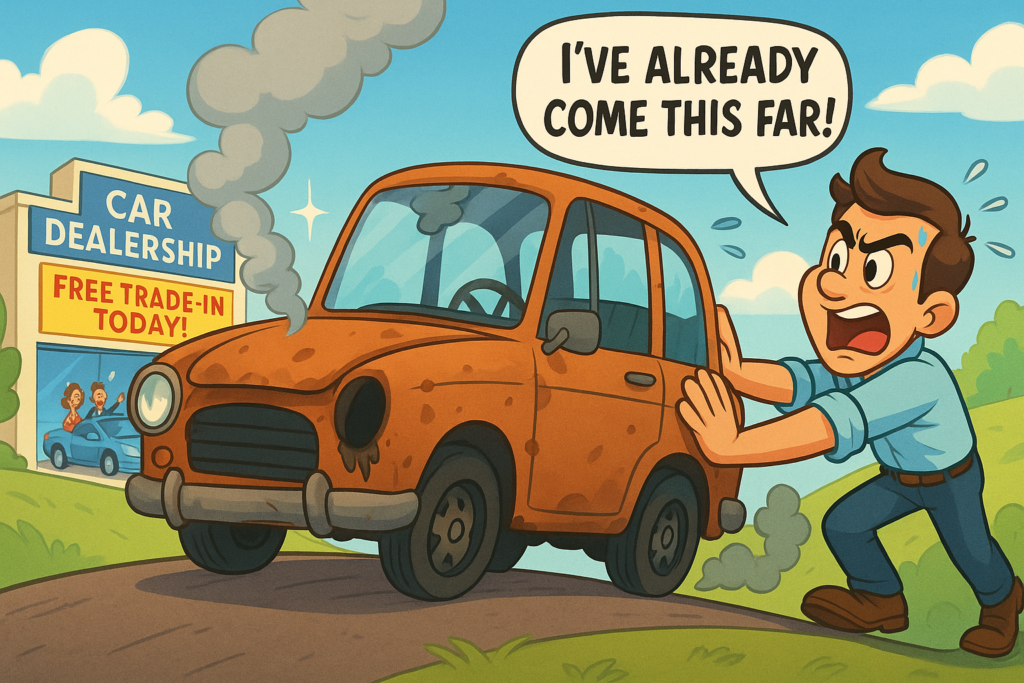
Arielle — a sharp early-stage founder in Montreal and longtime list member — emailed after reading my series on biases:
“I’ve read a lot about loss aversion and other status quo biases, but what’s the worst cognitive bias in terms of overall harm to a truly good product? Is there one that most makers don’t even know to watch for?”
What a great question! I knew my answer right away.
It’s the one that props up bloated legacy systems.
That keeps people loyal to underperforming vendors.
That traps companies in crappy software contracts long after they’ve stopped delivering ROI.
The Sunk Cost Fallacy.
You fall for it. I do too.
We ALL fall for it.
Not because we’re really foolish, but because we’re wired to make decisions emotionally, then rationalize them retroactively with logic.
When we’ve spent months onboarding a system, customizing it, training staff, and selling it up the chain, ditching it means admitting failure.
So we stick with it. Even when there’s a better option on the table.
Even when we’re suffering.
Even when switching would clearly pay off long-term.
In I Need That, I talk about how the brain clings to familiar pain over unfamiliar possibility. The sunk cost fallacy amplifies this effect — it tells us that leaving a poor solution is “wasting” the time, money, and effort we’ve invested so far.
But the investment is already gone.
It’s not coming back.
The rational choice is to pick the best solution for the future, not the one that made the past expensive.
That’s why your positioning needs to speak not just to product superiority, but liberation.
Product Payoff:
I once worked with a B2B software company whose primary competitor had been dominant in the space for nearly a decade — despite a horrendous user interface, sluggish performance, and growing customer dissatisfaction. The competitor kept its market share not because people loved it, but because they’d already spent so much time and budget implementing it.
We repositioned our product not only as better, but as a fresh start without starting over. The onboarding process mirrored familiar workflows (minimizing fear), the pricing model included migration assistance (eliminating perceived risk), and the copy shifted from “upgrade your platform” to “finally feel good about your choice.”
They won deals. Because they delivered hope.
Action for today:
Ask yourself this: What does your customer stand to lose if they keep investing in the wrong solution?
Now — how are you helping them stop that loss without shaming the decision that got them there?
Because the sunk cost fallacy isn’t a logic problem to solve.
It’s an emotional TRAP.
And your product might be their way out.
Want to explore how to position your offering as a fresh start — without forcing your prospects to admit failure? Tap that reply arrow and let’s chat about how to dismantle the emotional roadblocks in your buyer’s journey.
Or reach out to my brilliant team of product marketing strategists at Graphos Product.
